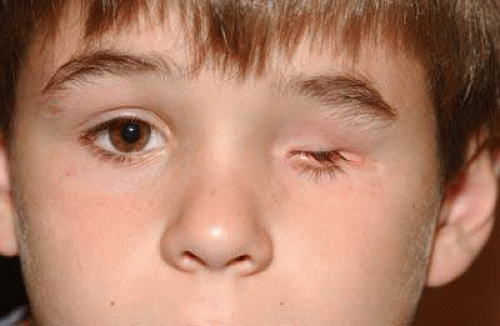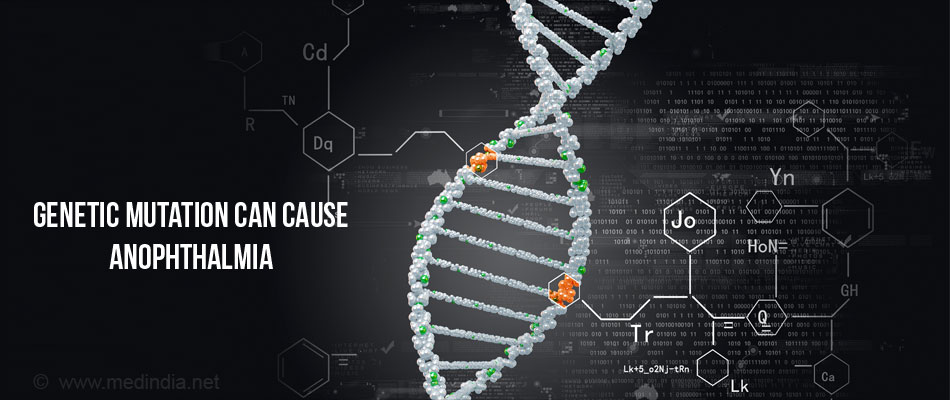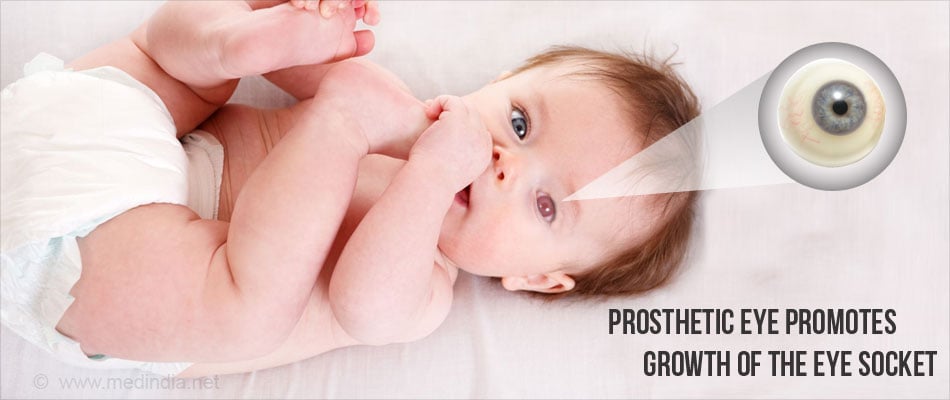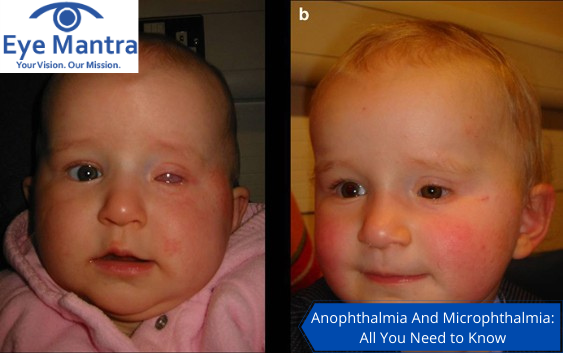Contents
Anophthalmia And Microphthalmia
Microphthalmia and Anophthalmia are eye diseases in which there is a decrease in the size of an eye along with other problems such as, malfunctioning of the eye in the orbit and absence of an eye respectively.
Microphthalmia
It is also referred to as microphthalmos in which micros mean small and ophthalmos means eye. It’s derived from the Greek language meaning “small eye”.
In fact, It is a disorder in which a single eye or both eyes are small and have abnormal functions of the eyes. They are called unilateral microphthalmia and bilateral microphthalmia respectively. This condition can sometimes cause loss of vision or blindness in children. It affects about 3-11% of children from the entire population who are blind.

It is important to consult a doctor immediately if you notice any sudden change in your vision. Like any disease, if early treated gives the best results.
Causes of Microphthalmia
This condition is caused by the following reasons such as
- Infections such as herpes simplex virus, rubella, and cytomegalovirus (CMV) during pregnancy cause microphthalmia disease in children.
- Fetal alcohol syndrome can also be a reason but there is inconclusive evidence to prove this.
- Sometimes abnormalities in chromosomes can cause microphthalmia by genetic factors.
- Triploid syndrome
- 13q deletion syndrome
- Monogenetic Mendelian disorders
In humans, Waardenburg syndrome type 2 is also a type of microphthalmia condition. Mutations in microphthalmia associated with transcription factor (MITF), are the cause of this syndrome. This causes the malformation of choroid fissure inside the body; this results in vitreous humour fluid drainage. A decrease in this fluid leads to a decrease in the size of the eye, causing microphthalmia condition.
Treatment of Microphthalmia
There is no cure for microphthalmia condition as the patient is born with it. Sometimes by the use of plus optics, the sight of the eye is maintained in microphthalmia. Since in microphthalmia, the eye size is small.

Anophthalmia
It is a condition that is seen when one or both eyes are absent. Both the eyeball as well as the ocular tissue are absent in this case.
Various eye units are affected by the absence of an eye. Such as missing of an eye causes a decrease in bony orbit size i.e., small bony orbit and constriction of mucosal socket and reduction in the palpebral fissure and shorter eyelids. It is a disease that is extremely rare and abnormality in genes causes this condition.

Causes of Anophthalmia
Various causes of Anophthalmia condition such as:
- Genes
Sox 2:
One of the genetic causes for Anophthalmia is the sox2 gene. The mutation of the sox2 gene causes sox2 Anophthalmia syndrome. This syndrome causes a decrease in the production of sox2 protein which regulates the other gene’s activities which bind to other regions of DNA. There is a disruption in the genes which cause the development of the eye due to the absence of sox2 protein.
It is an autosomal dominant inheritance. The people who are suffering from this Anophthalmia condition are usually among the first group of persons to have this mutation in their family history. The offspring inherit this condition from one of their parents through egg or sperm cells which consist of this mutated gene. Almost 33 mutations of the sox2 gene cause increase in the risk of anophthalmia condition.

RBP4:
This condition is especially inherited from the mother during pregnancy. It has a special maternal inheritance effect on the child. This condition is seen when the mother and her child of them carry the RBP4 mutation, which causes the deficiency of vitamin A in the infant. If vitamin A is deficient during the initial stages of the pregnancy, then it causes the anophthalmia condition in the infant as the initial stage is important for the development of the eye. This type of anophthalmia can be intervened in the initial months of pregnancy by the supply of vitamin A of retinyl esters.
Other Genes:
Other influential genes cause similar effects in the eye. Not only Sox2 and RBP4 cause anophthalmia in people but there are also other genes such as OTX2, CHX 10, and RAX as these genes help in retinal expression. The mutations in these genes can also cause microphthalmia conditions based on the range of severity. Another gene BMP4 also causes anophthalmia as well as myopia and microphthalmia. This gene causes anophthalmia by interactions with the Sonic hedgehog mechanism.
- Chromosome 14
The deletion of chromosome 14 causes anophthalmia. It is considered a major source of anophthalmia in the eyes. The deletion occurs in the region of q22.1- q22.3 in the chromosome. This deletion shows that chromosome 14 has an impact on the development of the eye. Other effects seen due to deletion of this chromosome include the “presence of small tongue, a micropenis along with undescended testes and retardation in growth and development” and also hypothyroidism.
- Environmental Factors
Various environmental factors cause anophthalmia in children. Anophthalmia is seen in children who are suffering from gestational acquired infections. These are typical viral infections. Toxoplasma, rubella and few strains of influenza virus are few well-known pathogens that cause anophthalmia in children. Other factors are maternal vitamin A deficiency, thalidomide exposure as well as exposure to X rays during the gestation period, and solvent abuse that influence the occurrence of anophthalmia condition.
Types of Anophthalmia
There are mainly three types of anophthalmia namely
- Primary anophthalmia
- Secondary anophthalmia
- Degenerative anophthalmia
Diagnosis of Anophthalmia
It is done in two ways. They are
a) Prenatal Diagnosis
b) Postnatal Diagnosis
(A) Prenatal Diagnosis
In this, the diagnosis of the disease is done by ultrasounds and amniocentesis. Using ultrasounds, the disease is diagnosed during gestation. The diagnosis of the disease is not possible until the second trimester due to the resolution of ultrasound.
20 weeks is the earliest time taken for detection of anophthalmia.
- Amniocentesis: This condition can only show anophthalmia when the chromosomes are abnormal. However chromosomal abnormality is seen in minor cases of anophthalmia.
(B) Postnatal Diagnosis
- The use of MRIs or CT scans helps in scanning the brain and the orbits and helps in identifying anophthalmia condition.
- Some of the doctors perform genetic tests, which helps in identifying anophthalmia. These tests include microarray analysis as well as single-gene testing.
- If the single-gene testing fails in diagnosing the disease, then genome sequencing and mitochondrial sequencing are considered which helps in molecular diagnosis of the anophthalmia condition.
Treatment of Anophthalmia
Since there is no chance of treating vision loss but the absence of the eye can be treated or can be made unnoticeable by methods such as prosthetic eye and cosmetic surgery.

Prosthetic Eye
A prosthetic specialist helps in treating this condition. Usually, conformers and expanders are used to increase the growth of the eye socket and expansion of the socket respectively. After the first two years of life, the conformers need to be changed. Later, a prosthetic eye is fitted inside the socket of the eye. The prosthetic eye is not rubbed with alcohol so that it does not cause any problems with the patient’s eye. Checking must be done regularly to see whether the prosthetic eye is fitted properly or not.
Cosmetic Surgery
Sometimes physical deformities are seen in children when there is an improper expansion of the eye orbit. So, to treat the physical deformities, surgery needs to be performed.
Many people get upper ptosis surgery or lower eyelid tightening surgery which helps in restoring the functions of the eye structures such as eyelids so that the appearance of the face is best. People who are suffering from degenerative anophthalmia get this cosmetic surgery commonly.
The best way to treat your eyes is to visit your eye care professional and get your eyes checked regularly. He will be able to assess the best method of treatment for your eye ailment.
Visit our website Eyemantra. To book an appointment call +91-9711115191. Or mail us at [email protected]. Our other services include Retina Surgery, Specs Removal, Cataract Surgery, and many more.
Related Links
Eye Infection: Common Causes, Symptoms And Treatment In Delhi



